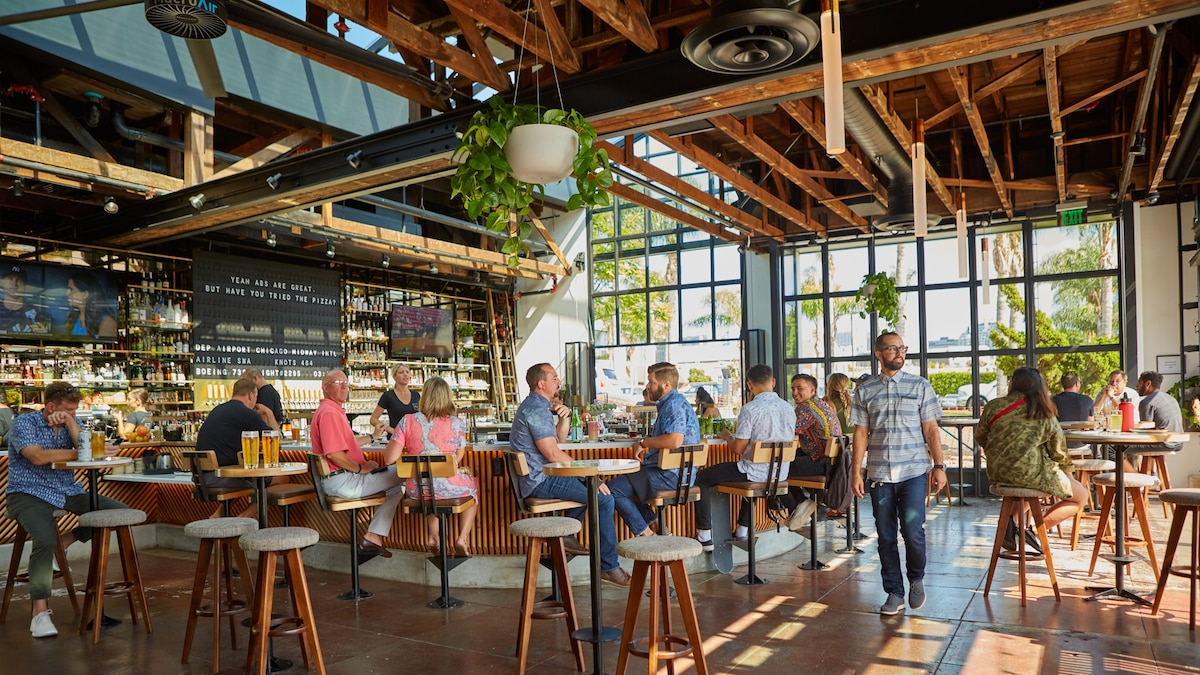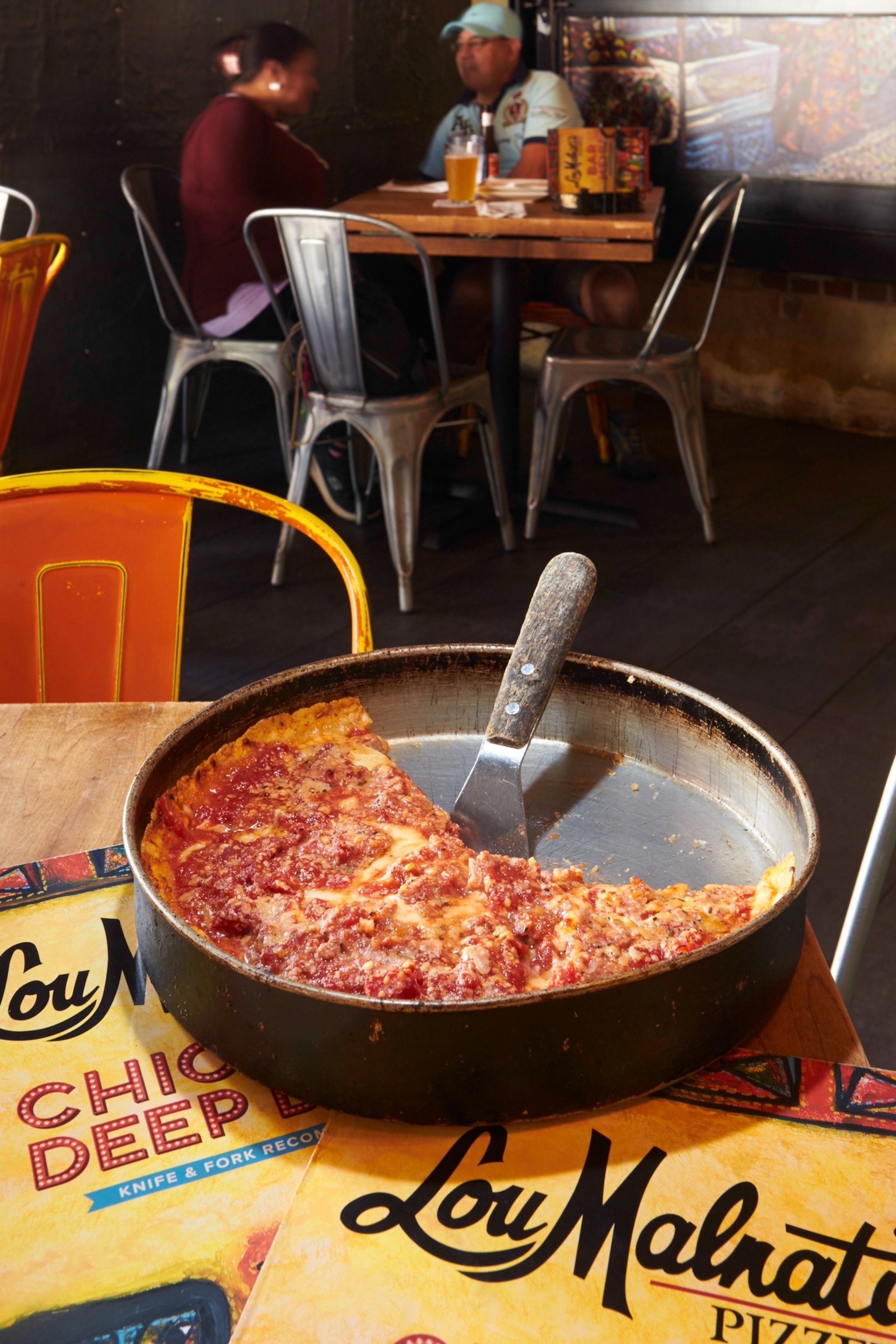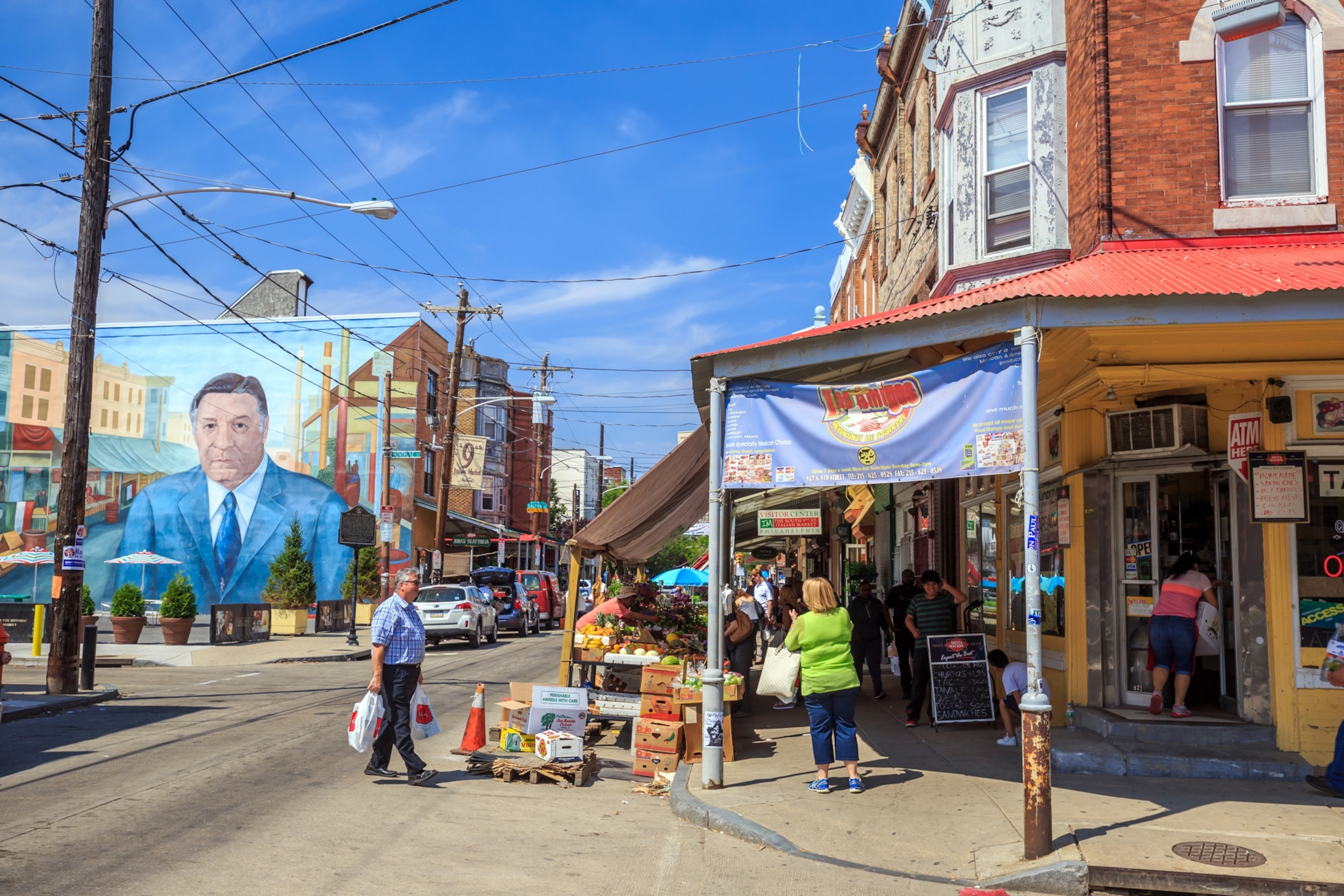Now Reading: The 8 best Little Italy neighborhoods in the U.S.
-
01
The 8 best Little Italy neighborhoods in the U.S.
The 8 best Little Italy neighborhoods in the U.S.

Frank DePasquale was a teenager in 1955 when his family left the foot of Mount Vesuvius in Naples to immigrate to Boston’s North End. His father was chasing the Italian dream of expanding his company Ambrosio, now one of the world’s biggest Italian confetti candy (Jordan almond) suppliers. Sadly, he passed away shortly after they arrived and never lived to see it. “My lifelong ambition here is to make his dream of running Italian American businesses come true,” says DePasquale.
Today, DePasquale is one of the 5.5 million Italians who immigrated to America between 1820 and 2004. He runs eight eateries in Boston’s North End. In the Italian community, families (like his) pass down their beloved recipes. From Philadelphia’s South 9th Street Italian Market to San Francisco’s North Beach renaissance, and all the Chicago pizza in between—these are some of the most iconic Italian neighborhoods, with the best Italian restaurants, delis, markets, and bakeries in the United States.
Mozzarella stretching, sausage stuffing, and a ceiling full of meat! Jo Franco is discovering what makes New York’s Little Italy so authentic. Stream National Geographic’s “Big Little Italy” now on YouTube.
Click here to see the YouTube playlist for National Geographic’s Big Little Italy.
Little Italy, New York City
Lower Manhattan’s Little Italy was once the primary American settlement for Italian immigrants, reaching 10,000 Italians in 1910. After Chinatown moved in, Little Italy was pared down to five blocks on Mulberry Street. This is where travelers can still visit America’s oldest pizzeria, (Gennero) Lombardi’s (1905), the first Italian cafe, Ferrara Bakery (1892), and La Bella Vita (1985). Owned by the Esposito family since 1975, IL Cortile Ristorante is another place worth dining, especially for fans of The Sopranos. The restuarant starred as the gathering spot for the cast of the TV show. This Little Italy neighborhood also hosts the annual Feast of San Gennaro in September with parades, live music, and street food like calzones and zeppole (fried dough).
Meanwhile in the Bronx, often dubbed New York City’s “Real Little Italy,” Italian shops and restaurants—like Mario’s—have lined Arthur Avenue for a century. Italian Americans shop at Arthur Avenue Market, developed by former Mayor Fiorello LaGuardia in 1940.

In New York City, revelers hang out at the San Gennaro Festival in Manhattan’s Little Italy neighborhood. The feast celebrates the life of San Gennaro of Naples, the Bishop of Benevento, Italy, who was martyred in 305 A.D.
Photograph By Joe Buglewicz/Redux

In NYC’s Little Italy, a cook grills sausage at the annual Feast of San Gennaro on Mulberry Street. The Neapolitans pray to him for protection from fires, earthquakes, plagues, droughts, and the eruption of Mt. Vesuvius.
Photograph By John M. Mantel/Redux

During the Feast of Gennaro, contestants compete in the zeppole-eating contest. The Italian pastry is a deep-fried dough ball with powdered sugar.
Photograph By John M. Mantel/Redux
North End, Boston
Pillowy gnocchi baked with sweet marinara, buffalo mozzarella, and basil in a wood-fired oven is worth the indulgence at DePasquale’s Bricco restaurant—especially when paired with pepperoncini juice in a hot and dirty martini topped off gorgonzola-stuffed olives.“My whole goal is to keep the traditions going, like the feast of the seven fishes the way we celebrated in Italy and Sunday dinners,” says DePasquale, who opened his first restaurant, Trattoria Il Panino, in 1987. “It’s keeping this neighborhood the way it was.”
In the historic North End, between the 1680 home of Paul Revere and the Old North Church, there are over 100 Italian restaurants, most of which are still run by generational Italian immigrant families. With newcomers, some still occupy brick apartments above touristy outdoor eateries, like Boston‘s first Italian cafe, Caffé Vittoria, brewing since 1929; oldest Italian restaurant, Cantina Italiana; and first pizzeria, Pizzeria Regina, open since 1926. New restaurants, including renowned Italian chef Tony Susi’s Little Sage, maintain old-world flavor. Bova’s, Mike’s, and Modern bakeries still compete in Boston’s “cannoli wars” for bragging rights, while Parziale’s has been serving pizzelle since 1907. Take it all in on Prince Street, where Prince Spaghetti was first made by Sicilian immigrants in 1912 and later filmed for the famous commercial; on a North End Boston Food Tour by life-long North End resident Bobby Agrippino; or at the annual Saint Anthony’s Feast in August.

Boston’s North End, a working-class Italian-American neighborhood, showcases an array of architectural styles including Italianate, colonial revival, Romanesque, and Renaissance revival.
Photograph By Marcio Jose Bastos Silva/ Shutterstock
North Beach, San Francisco
The California Gold Rush drew Italian American stoneworkers to San Francisco to build mansions for the rich who’d struck gold. Sicilian anglers found blue seas off Fisherman’s Wharf in San Francisco Bay, and Italian businessmen opened anchors like Ghirardelli chocolate. After the San Francisco earthquake in 1906, Italian Americans brought into the city’s North Beach neighborhood their legendary eateries, including Liguria, the city’s oldest bakery with the best focaccia.
From the tricolor crosswalks to the new Honor Walk celebrating local notable historic Italian Americans, what’s clear is San Francisco’s Little Italy is experiencing a renaissance. Find all pizza styles at Tony’s Pizza Napoletana owned by Guinness World Record Holder pizza tosser Tony Gemignani, and visit Fior d’Italia, open since 1886 and touted as the country’s oldest Italian restaurant.
Italian foodies have a lot to consider, from the rum-soaked St. Honore sponge cake at Victoria Pastry Company, the tiramisu at Stella Pastry & Cafe, and the Italian marionette show and pizza acrobatics at Festa Italiana.

Although not located in San Francisco’s Little Italy, the Ghirardelli Chocolate Company was founded by Italian chocolatier, Domenico Ghiradelli in 1852. Ghirardelli was born in Rapallo, Italy, and moved to California during the Gold Rush.
Photograph By F11 Photo/ Shutterstock
Little Italy, Chicago
While pizza was first rolled out around the 6th century B.C., Chicago gets credit for its sink-your-teeth-in pizza crust. Americans inspired by pizza-tossing Neapolitan-Italians created the first deep-dish “Chicago-style” pizza at the original Pizzeria Uno in 1943. Italians who settled in the Windy City came looking for factory jobs in the 1800s and settled in the Little Italy neighborhood of the city’s Near West Side, where Italian American heritage remains strong on Taylor Street at Conte di Savoia and the family-run Pompei. Chi-town’s second claim to Italian food fame—the thin-sliced Italian beef sandwich with au jus—was invented at Al’s Beef by Tony Ferreri in 1938. For a James Beard award-winner try Tufano’s Vernon Park Tap; for the red-sauce joint go to Peanut Park Trattoria; and for little romance, it’s been The Village at Italian Village since 1927.

In Chicago, food lovers can try a delicious deep-dish pizza at several restaurants around the city, including Malnatti’s Restaurant on Rush Street.
Photograph By Robert Haidinger/laif/Redux
Little Italy, Cleveland
Many Italians who came to Ohio via New York City followed in the footsteps of Joseph Carabelli. The stonecutter arrived from Lombardy in 1880, and today, the monuments he carved still stand proudly beside Cleveland’s Little Italy. The original Italian neighborhood developed by Sicilian immigrants disappeared to urban renewal after World War II.
Carabelli’s neighborhood greets visitors with longstanding establishments, like Guarino’s, established in 1918 and still family-run. Mama Santa’s is the spot for a Sicilian slice and if it’s chicken marsala you’re after, go to La Dolce Vita, where you can still catch live opera performances. Cap off the meal with cappuccino and biscotti at Presti’s, Cleveland’s oldest bakery, or grab a cannoli from Corbo’s.

The West Side Market is considered the oldest operating market space in Cleveland, Ohio.
Photograph By Sean Pavone/Shutterstock

The streets in Boston’s Little Italy are decorated for a religious festival in 1935.
Photograph By B. Anthony Stewart, Nat Geo Image Collection

In 1935, this “while you wait” cameraman finds business profitable during a religious celebration in Boston’s Little Italy.
Photograph By Anthony B. Stewart, Nat Geo Image Collection
Little Italy, San Diego
Italian families first came to San Diego in the 1920s for tuna fishing—a longstanding Sicilian tradition. This northwest Little Italy neighborhood went quiet for years, until its revival through Italian urban public art, waterfront green space, and events—thanks to its Little Italy Association. Tucked in among over 70 Italian food establishments is the award-winner that helped bring the neighborhood back to life in 2003, Market By Buon Appetito. Other gems include Enoteca Adriano, Pappalecco (serving Italian coffee, gelato, and paninis), and Vincenzo Cucina & Lounge and its pasta bar. There’s also a farmer’s market open twice a week and a European-style gathering space, Piazza della Famiglia.

The Little Italy Association oversees and expedites the revitalization and beautification of the Little Italy neighborhood in downtown San Diego. Visitors will find trendy cocktail bars, restaurants with busy patios, upscale clothing boutiques, and indie music venues, but the weekly Little Italy Mercato Farmers’ Market draws crowds.
Photograph By Gabriele Maltinti / Shutterstock
Bella Vista, Philadelphia
Early Italian immigrants made Philadelphia’s Bella Vista neighborhood a home. At the heart of this still-lively, charming neighborhood sits the country’s oldest continually operating outdoor food market, South 9th Street Italian Market, established by early Italian immigrants living in Antonio Palumbo’s boarding house. Two of the country’s oldest continuously operating Italian restaurants reside in the market district: Ralph’s (1900) and Dante & Luigi’s Corona di Ferro (1899). Take an Italian American-led StrEATS of Philly Food Tour, and savor the sweet sfogliatelle (a flaky, shell-shaped, cream-filled pastry) at Isgro Pastries, and salty provolone and prosciutto at DiBruno Bros. market, opened in 1939 by Italian immigrants Dann and Joe Di Bruno.

Philadelphia’s South 9th Street Italian Market is the oldest working outdoor market in the U.S.
Photograph By F11 Photo/shutterstock
Federal Hill, Providence
Anyone who has visited Providence knows that Italian roots run deep in Rhode Island’s capital city. “Growing up with my Italian grandparents was a gift—their homes were always filled with the aromas of simmering sauce, fresh pasta, meats, baked treats, and stories told around a crowded kitchen table,” says Rick Simone.
Today, Providence’s Federal Hill is still home to third- and fourth-generation Italians, feeding us like we’re family at Camille’s and Scialo Brothers Bakery. There’s meat and cheese from the DiCicco family-owned Tony’s Colonial Market, and Angelo’s Civita Farnese—the city’s oldest restaurant open since 1924. And don’t forget the handmade pasta, kneaded for 80 years now at Venda Ravioli and fourth-generation meat market Antonelli Poultry.
“Italian food wasn’t just a meal. It was a celebration of love, family, and tradition,” says Simone. ”Those early experiences taught me the deep value of connection, and they continue to shape everything I do today.”

Travelers can enjoy a gondola ride on the Providence River in Providence, R.I.
Photograph By Claudia G Cooper/Shutterstock
Anna Fiorentino is an award-winning journalist of 20 years whose work has also appeared in Afar Magazine, Outside Magazine, BBC, Smithsonian Magazine, and Boston Globe Magazine. Follow her on Instagram.






















